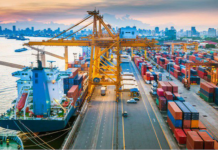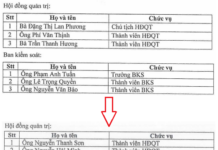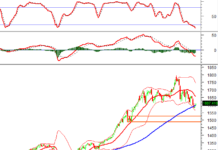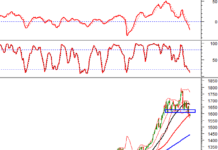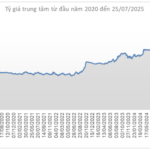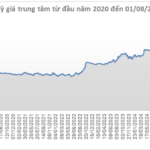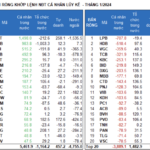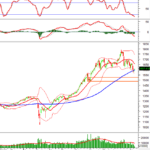The Vinaship Sea, built in 1998 in Japan with a deadweight tonnage of almost 28,000 DWT, is facing challenges due to market instability and reduced demand for vessels over 25 years old. The company’s initial plan was to sell the Vinaship Pearl and continue operating the Vinaship Sea for another 1-2 years as it had already been fully depreciated. However, the volatile maritime transport market has made this plan impractical.
Vinaship Sea’s primary cargo sources, including cement, clinker, and coal, are unstable due to tax policies, anti-dumping measures, and international trade tensions. While freight rates remain low, the anticipated repair costs for the vessel are expected to reach 26 billion VND in November. The leadership team has assessed that retaining the vessel is financially inefficient and may further deteriorate the company’s financial performance.
In a report to shareholders, the board of directors emphasized that selling the Vinaship Sea is a rational decision. Beyond loss reduction and operational cost savings, the company aims to redirect resources towards investing in a younger and more modern fleet to meet market demands.
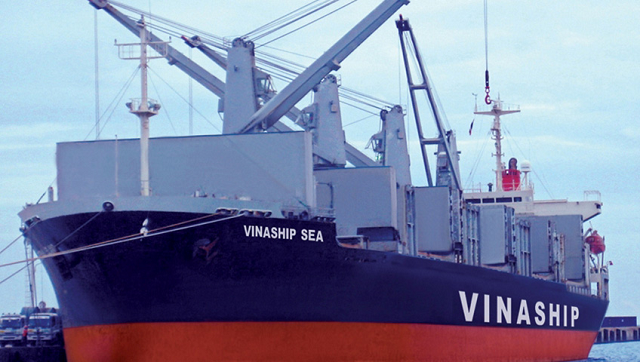
Vinaship opts to sell Vinaship Sea to avert potential losses – Image: Vinaship
|
As of mid-2025, Vinaship’s fleet consisted of 5 vessels with a combined deadweight tonnage of approximately 100,000 DWT. The oldest vessels in the fleet are the Vinaship Sea and Vinaship Pearl, which have been in operation for 27 and 29 years, respectively. The youngest vessel, Vinaship Unity, is 13 years old and was acquired from the international second-hand ship market in late 2024.
The operational efficiency of the fleet showed signs of decline in Q2 2025. Unstable cargo sources, technical issues with some vessels, and increased expenses led to a drop in production and revenue. Notably, the Vinaship Sea and Vinaship Gold experienced significant risks, reducing operational days and profitability.
The financial reports for Q2 revealed the company’s challenges. Excluding the extraordinary income from the sale of Vinaship Star in the previous year, Vinaship’s net profit stood at only 372 million VND, a significant decrease from the previous 6.1 billion VND. While revenue increased by 13% to 192 billion VND, the gross profit margin dropped sharply from 6.2% to 4.3%. Additionally, the company incurred an additional 2.2 billion VND in financial expenses due to loan interest for the purchase of Vinaship Unity.
For the first six months of the year, Vinaship recorded a meager net profit of just over 326 million VND, the lowest in many years. This result is far from the profit target of over 100 billion VND approved by the general meeting of shareholders.
Vinaship Welcomes New Vessel, the Largest in Their Fleet
| Vinaship relies on profits from ship sales to achieve their 2025 targets |
A breakdown of the first half-year revenue revealed a 10% decrease in the core maritime transport segment, amounting to 199 billion VND. Conversely, the chartering of external vessels increased significantly by 47%, contributing over 77 billion VND. As a result, gross profit doubled to 17 billion VND. However, when examined separately, the maritime transport business still incurred a loss of 5.3 billion VND, although this represented an improvement from the 12.6 billion VND loss in the same period in 2024.
The dry bulk market in Q2 experienced fluctuations. According to Vinaship, the Baltic Dry Index (BDI) recovered after the extended Lunar New Year holiday but lacked sustainability. Tariff pressures from the US kept the index stagnant in April and May, with a slight improvement in June due to increased demand in the Pacific and Atlantic routes.
Vinaship’s fleet primarily operates in Northeast and Southeast Asian regions, focusing on cargo such as cement, clinker, rice, and fertilizer. However, several routes witnessed declining volumes, particularly the export of cement to the Philippines and rice to Indonesia. Freight rates remained stagnant while operating costs increased due to the aging vessels.
For 2025, Vinaship aims to rejuvenate its fleet by investing in two dry bulk carriers with a deadweight tonnage ranging from 28,000 to 35,000 DWT. These vessels, built between 2008 and 2014 in Japan, China, or South Korea, are expected to cost approximately 664 billion VND.
– 13:46 07/08/2025
Luxury Villa Sold for a Whopping $3 Million in Sunshine Group’s Live Stream Auction on August 5th
On August 5, a live real estate broadcast by Sunshine Group on NobleGo made waves when a customer boldly sealed the deal for a Noble Palace Long Bien villa worth nearly VND 70 billion ($2.98 million) during the live stream, marking the platform’s highest-value transaction to date.
The Greenback Slides: A Sudden Shift in Fortune
“The U.S. dollar took a turn last week, experiencing a decline in the international market as the deadline for higher tariffs loomed. As the week of July 21-25, 2025, unfolded, the implications of President Donald Trump’s trade policies became increasingly apparent, with the dollar’s performance reflecting the market’s anticipation of these changes.”
The Greenback Surges.
“During the week of July 28 to August 1, 2025, the US dollar surged as the Federal Reserve maintained interest rates in its July meeting, coupled with positive economic data from the US. The Fed’s decision to stand pat on rates, for now, comes amid a backdrop of encouraging economic indicators, signaling a resilient American economy.”
The First Month of 2025: VN-Index Slips, Liquidity Hits 3-Year Low, Foreigners Keep Selling
The first month of the year witnessed a significant 23.4% decline in average trading values, bringing the figure to a meager 11.406 trillion VND. This places the monthly liquidity at a three-year low, a concerning development for the market.






